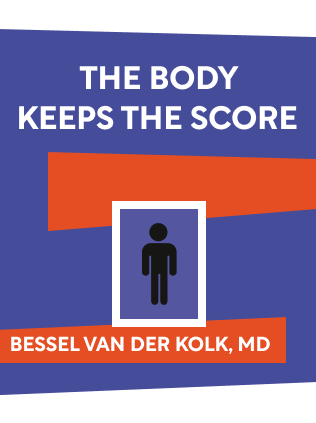

This article is an excerpt from the Shortform book guide to "The Body Keeps The Score" by Bessel van der Kolk. Shortform has the world's best summaries and analyses of books you should be reading.
Like this article? Sign up for a free trial here .
What are trauma flashbacks? How do flashbacks occur, and how do they affect someone suffering from PTSD?
Trauma flashbacks can occur with many types of trauma. They can have a serious negative impact on a person’s life.
Read more about trauma flashbacks, how they work, and more.
What Are Trauma Flashbacks?
One of the most assaulting symptoms of trauma is flashbacks, when survivors relive fragments of the traumatic experience. Traumatic experiences are so overwhelming that the mind breaks it up into fragments of sights, sounds, sensations, emotions, and thoughts; later, any similar images, sounds, smells, and sensations can trigger a flashback.
Trauma flashbacks are even worse than the traumatic event itself, because while the event had a definitive beginning, middle, and end, the flashbacks can come at any time and you never know how long they’ll last.
Trauma Survivors Suffer Emotional Numbness
Trauma flashbacks are so intense that trauma sufferers try to avoid them at all costs; they may compulsively go to the gym and push themselves physically, take drugs or drink alcohol to dull the memories, or put themselves in dangerous situations so they can feel some sense of control over chaos.
However, trauma survivors can never fully escape the flashbacks until they’ve healed from their trauma, and the more they experience flashbacks the more they remain stuck in that event; the more they’re stuck in the past, the less able they are to experience the present, and they tend to go through life feeling numb and as if they’re simply going through the motions.
As a result, some trauma survivors feel more alive and engaged when they are describing and essentially revisiting their trauma — as in when veterans share combat stories.
Freud called the habit of either describing or recreating trauma as “the compulsion to repeat.” He believed that trauma survivors engage in these reenactments in an unconscious attempt to gain control over a situation that haunts them, in (unconscious) hopes of eventually reaching a resolution. However, there is no evidence to back up Freud’s theory, and in fact, repetition — even in therapy — leads to pain, self-hatred, and continued fixation on the trauma.
Addiction to Trauma
Your body can adapt to and become dependent upon all different kinds of stimuli — whether it’s a recreational drug that makes you feel good, or an experience like marathon running or parachute jumping that is initially uncomfortable or scary. As the body adjust, it establishes a new chemical balance, causing you to feel the pain of withdrawal when that substance or experience is not available. Over time, people become more motivated by the avoidance of withdrawal rather than the thrill of the experience itself.
University of Pennsylvania researcher Richard Solomon theorized that endorphins, the chemicals secreted in your brain in times of stress (e.g. during traumatic events) can become an addiction, which could explain why trauma survivors seek out stressful situations to actually relieve the anxiety and boredom — essentially withdrawal from the stress — they feel in day-to-day life.
This idea was supported by an experiment the author conducted with eight Vietnam veterans: The veterans had to keep their hands in ice water as long as they could bear it, once while watching a clip from the violent war movie Platoon, and once while watching a clip from a peaceful movie; the veterans tolerated the ice water 30 percent longer when watching the combat scenes. van der Kolk and his fellow researchers concluded that watching Platoon led the veterans’ brains to secrete morphine-like substances in the brain that helped to block the pain of the ice water.
Flashbacks Show How Trauma Alters Perception and Imagination
Perception
Seemingly ordinary things can trigger trauma flashbacks — a particular smell, a word or phrase, a physical position, or an image that is somehow associated with the traumatic event. Such stimuli suddenly take on a new meaning because they’re associated with the trauma, and are thus perceived as a threat.
In this way trauma significantly alters the way people see things: You may look at a man walking down the street as simply that, but a rape survivor can see the same man and perceive him as a would-be attacker.
Imagination
In an experiment to learn more about trauma flashbacks and how to treat them, van der Kolk gave Rorshach tests to 21 veterans. A Rorschach test is also known as the ink blot test, in which you’re shown a nondescript ink blot and asked to describe what you see in it, as if you were finding animals and other images in the shapes of clouds. Rorschach tests indicate how you create a mental image and association from a meaningless ink blot.
Sixteen of the 21 veterans saw gory and brutal wartime images in the ink blots — things like disemboweled or decapitated comrades and fatally burned children — whereas people who haven’t experienced trauma typically see benign things like butterflies or people. The researchers learned that many traumatized people see their trauma in ordinary things all around them, which makes it difficult if not impossible to decipher the reality of day-to-day situations.
The other five veterans saw absolutely nothing, which was even more alarming to the researchers because it indicated that traumatized people can lose the ability to let their minds imagine.
Both results showed how trauma impacts imagination: The veterans who saw nothing didn’t allow their imagination to interpret any meaning from the ink blot, and the veterans who saw wartime images were simply superimposing images from the traumatic memories they kept replaying, instead of letting their minds create new meaning.
Imagination is vital to quality of life, because it allows you to envision the future, come up with new possibilities, and ultimately have hope. Without imagination, trauma survivors can’t create hope, goals, or visions of a better future.

———End of Preview———
Like what you just read? Read the rest of the world's best book summary and analysis of Bessel van der Kolk's "The Body Keeps The Score" at Shortform .
Here's what you'll find in our full The Body Keeps The Score summary :
- How your past trauma might change your brain and body
- What you can do to help your brain and body heal
- Why some trauma survivors can't recognize themselves in the mirror






